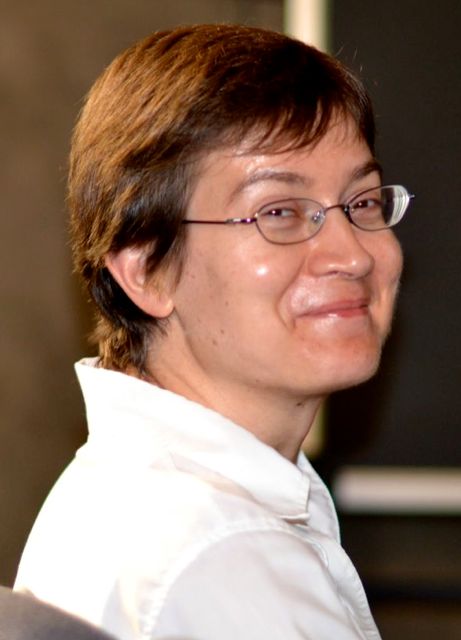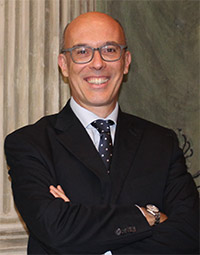Studying at the University of Verona
Here you can find information on the organisational aspects of the Programme, lecture timetables, learning activities and useful contact details for your time at the University, from enrolment to graduation.
Academic calendar
The academic calendar shows the deadlines and scheduled events that are relevant to students, teaching and technical-administrative staff of the University. Public holidays and University closures are also indicated. The academic year normally begins on 1 October each year and ends on 30 September of the following year.
Course calendar
The Academic Calendar sets out the degree programme lecture and exam timetables, as well as the relevant university closure dates..
| Period | From | To |
|---|---|---|
| I sem. | Oct 3, 2016 | Jan 31, 2017 |
| II sem. | Mar 1, 2017 | Jun 9, 2017 |
| Session | From | To |
|---|---|---|
| Sessione invernale Appelli d'esame | Feb 1, 2017 | Feb 28, 2017 |
| Sessione estiva Appelli d'esame | Jun 12, 2017 | Jul 31, 2017 |
| Sessione autunnale Appelli d'esame | Sep 1, 2017 | Sep 29, 2017 |
| Session | From | To |
|---|---|---|
| Sessione estiva Appelli di Laurea | Jul 18, 2017 | Jul 18, 2017 |
| Sessione autunnale Appelli di laurea | Nov 22, 2017 | Nov 22, 2017 |
| Sessione invernale Appelli di laurea | Mar 20, 2018 | Mar 20, 2018 |
| Period | From | To |
|---|---|---|
| Festa di Ognissanti | Nov 1, 2016 | Nov 1, 2016 |
| Festa dell'Immacolata Concezione | Dec 8, 2016 | Dec 8, 2016 |
| Vacanze di Natale | Dec 23, 2016 | Jan 8, 2017 |
| Vacanze di Pasqua | Apr 14, 2017 | Apr 18, 2017 |
| Anniversario della Liberazione | Apr 25, 2017 | Apr 25, 2017 |
| Festa del Lavoro | May 1, 2017 | May 1, 2017 |
| Festa della Repubblica | Jun 2, 2017 | Jun 2, 2017 |
| Vacanze estive | Aug 8, 2017 | Aug 20, 2017 |
Exam calendar
Exam dates and rounds are managed by the relevant Science and Engineering Teaching and Student Services Unit.
To view all the exam sessions available, please use the Exam dashboard on ESSE3.
If you forgot your login details or have problems logging in, please contact the relevant IT HelpDesk, or check the login details recovery web page.
Should you have any doubts or questions, please check the Enrollment FAQs
Academic staff

Bloisi Domenico Daniele
 domenico.bloisi@univr.it
domenico.bloisi@univr.it
 maurizio.boscaini@univr.it
maurizio.boscaini@univr.it
 federico.busato@univr.it
federico.busato@univr.it
 mila.dallapreda@univr.it
mila.dallapreda@univr.it
Folloni Valentina
 bruno.gobbi@univr.it
bruno.gobbi@univr.it

Mogavero Fabio
 fabio.mogavero@univr.it
fabio.mogavero@univr.it
 claudio.tomazzoli@univr.it
claudio.tomazzoli@univr.it
Ugolini Simone
 simone.ugolini@univr.it
simone.ugolini@univr.it
Study Plan
The Study Plan includes all modules, teaching and learning activities that each student will need to undertake during their time at the University.
Please select your Study Plan based on your enrollment year.
1° Year
| Modules | Credits | TAF | SSD |
|---|
2° Year activated in the A.Y. 2017/2018
| Modules | Credits | TAF | SSD |
|---|
3° Year activated in the A.Y. 2018/2019
| Modules | Credits | TAF | SSD |
|---|
| Modules | Credits | TAF | SSD |
|---|
| Modules | Credits | TAF | SSD |
|---|
| Modules | Credits | TAF | SSD |
|---|
Legend | Type of training activity (TTA)
TAF (Type of Educational Activity) All courses and activities are classified into different types of educational activities, indicated by a letter.
Programming II and Software Engineering - INGEGNERIA DEL SOFTWARE (2017/2018)
Teaching code
4S003714
Credits
6
Coordinator
Not yet assigned
Language
Italian
Also offered in courses:
- Software Engineering of the course Bachelor's degree in Bioinformatics
- Software Engineering - Teoria ed esercitazioni of the course Bachelor's degree in Bioinformatics
- Software Engineering - Laboratorio of the course Bachelor's degree in Bioinformatics
Scientific Disciplinary Sector (SSD)
INF/01 - INFORMATICS
To show the organization of the course that includes this module, follow this link: Course organization
The teaching is organized as follows:
Teoria ed esercitazioni
Laboratorio
Learning outcomes
------------------------
MM: Teoria ed esercitazioni
------------------------
The course introduces the basic scientific and professional notions of software engineering, addressing in particular the different phases of the software development process: planning, design, modeling and specification, implementation, testing and validation, evaluation, maintenance. The programming projects carried out in the lab complement the theory lectures with the design, documentation and realization of a software. At the end of the course, the student will have acquired all the basic knowledge related to software engineering and will be able to apply it in the design and implementation of software systems. He will also be able to interact with all the stakeholders, from the requirement elicitation to the software maintenance.
------------------------
MM: Laboratorio
------------------------
The aim of this module is to support the student during the planning, documentation, and implementation of a software application using the techniques introduces during the theory course.
Program
------------------------
MM: Teoria ed esercitazioni
------------------------
* Introduction to Software Engineering
- Definition of Software Engineering
- Professional software development
- Software engineering ethics
* Software Processes
- Software process models
- Process activities
- Coping with change
* Agile Software Development
- Agile methods
- Agile development techniques
- The SCRUM methodology
* Requirements Engineering
- Functional and non-functional requirements
- Requirements engineering processes
- Requirements Engineering and UML Use Cases
* Architectural Design
- Architectural design decisions
- Architectural views
- Architectural patterns
-- MVC
-- Repository
-- Client server
-- Pipe and filter
* OO Design and Implementation
- OO basic concepts
- The standard language UML 2 for software modeling
-- Use Case diagrams
-- Class diagrams
-- Activity Diagrams
-- Sequence diagrams
- Design patterns
-- Introduction
-- Singleton
-- Observer
-- Template
-- Iterator
-- Factory
-- Abstract factory
-- Proxy
-- Facade
-- Decorator
* Verification and Validation
- Introduction
- Inspection and test
- Testing: unit test, integration test, user acceptance test
* Software evolution and maintenance
- Change Management
- Legacy Systems
- Software maintenance
------------------------
MM: Laboratorio
------------------------
- Introduction to Swing library for the development of graphical user interfaces in Java.
- Introduction to TkInter, wxPython, pyGTK/PyGobject, and PyQt/PySide libraries for the development of graphical user interfaces in Python.
- Introduction to Eclipse-Papyrus and StarUML tools for the development of UML projects.
Teaching methods
- Lecturing and practicing in computer laboratory.
Didactical material (slides) and further exercise texts are available on the eLearning platform.
The teacher is available for individual meeting in office hours.
Bibliography
| Activity | Author | Title | Publishing house | Year | ISBN | Notes |
|---|---|---|---|---|---|---|
| Teoria ed esercitazioni | Ian Sommerville | Ingegneria del software - 10/Ed. (Edizione 10) | Pearson | 2017 | 9788891902245 | |
| Teoria ed esercitazioni | Martin Fowler | UML Distilled (Edizione 4) | Pearson - Addison Wesley | 2010 | 9788871925981 | |
| Laboratorio | Martin Fowler | UML DISTILLED (Edizione 4) | Pearson Italia | 2010 | 978-88-7192-598-1 |
Examination Methods
------------------------
MM: Teoria ed esercitazioni
------------------------
The examination, for students both attending and not attending classes, consists of a project related to lab activities and of an oral examination. Such exam will allow one to show both his communication skills and his knowledge about Software Engineering. Student will also demonstrate their skills in applying their knowledge in "practical" software engineering tasks.
------------------------
MM: Laboratorio
------------------------
The examination consists of a project related to lab activities. The project has to be presented and discussed during the oral exam.
Type D and Type F activities
Modules not yet included
Career prospects
Module/Programme news
News for students
There you will find information, resources and services useful during your time at the University (Student’s exam record, your study plan on ESSE3, Distance Learning courses, university email account, office forms, administrative procedures, etc.). You can log into MyUnivr with your GIA login details: only in this way will you be able to receive notification of all the notices from your teachers and your secretariat via email and soon also via the Univr app.
Graduation
List of theses and work experience proposals
| theses proposals | Research area |
|---|---|
| Analisi e percezione dei segnali biometrici per l'interazione con robot | AI, Robotics & Automatic Control - AI, Robotics & Automatic Control |
| Integrazione del simulatore del robot Nao con Oculus Rift | AI, Robotics & Automatic Control - AI, Robotics & Automatic Control |
| Domain Adaptation | Computer Science and Informatics: Informatics and information systems, computer science, scientific computing, intelligent systems - Computer graphics, computer vision, multi media, computer games |
| Domain Adaptation | Computer Science and Informatics: Informatics and information systems, computer science, scientific computing, intelligent systems - Machine learning, statistical data processing and applications using signal processing (e.g. speech, image, video) |
| BS or MS theses in automated reasoning | Computing Methodologies - ARTIFICIAL INTELLIGENCE |
| Domain Adaptation | Computing Methodologies - IMAGE PROCESSING AND COMPUTER VISION |
| Domain Adaptation | Computing methodologies - Machine learning |
| Dati geografici | Information Systems - INFORMATION SYSTEMS APPLICATIONS |
| Analisi e percezione dei segnali biometrici per l'interazione con robot | Robotics - Robotics |
| Integrazione del simulatore del robot Nao con Oculus Rift | Robotics - Robotics |
| BS or MS theses in automated reasoning | Theory of computation - Logic |
| BS or MS theses in automated reasoning | Theory of computation - Semantics and reasoning |
| Proposte di tesi/collaborazione/stage in Intelligenza Artificiale Applicata | Various topics |
| Proposte di Tesi/Stage/Progetto nell'ambito dell'analisi dei dati | Various topics |
Attendance
As stated in the Teaching Regulations for the A.Y. 2022/2023, attendance at the course of study is not mandatory.

 +39 045 802 7980
+39 045 802 7980































